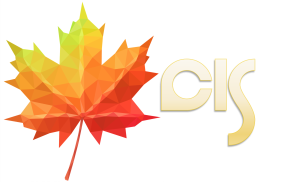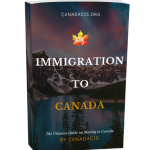How to Get a Teaching Job in Canada
Home » Blog » Jobs in Canada for Foreigners » The Ultimate Guide to Teaching Jobs in Canada
🧑🏻🏫 List of Teaching Jobs in Canada for Foreigners
- Preschool Educator
- Kindergarten Teacher
- Elementary School Teacher
- Visual Arts Teacher
- ESL Teacher
- Elementary English And French Teacher
- High School Math and Science Teacher
- High School Chemistry and Biology Teacher
- English Literature Professor
- Business Management Professor
One of the most notable factors about the country is its endless demand for immigrant workers and here’s where teachers come into play.
There are over a thousand teaching options available in Canada, and what’s great about life as a Canadian teacher is there will always be a need for this position.
After all, teachers are arguably the most important influencers in a child’s life.
If you’re looking for ways to find teaching jobs in Canada, you’ve come to the right place.
In this useful guide, we’ve provided straight-to-the-point information on all you need to know about teaching in Canada and why it may be the perfect place for you.
Table of Contents
💼 Work Benefits for Immigrants Teaching in Canada
💡 Parental Leave
The benefits are provided for a maximum of 35 weeks at a rate of 55% of your average weekly insurable wages. Extended parental benefits may be paid 78 weeks after the kid is delivered or put for adoption.
💡 Sickness benefits
If you are unable to find employment due to medical reasons, you may be entitled to up to 55% of your wages for up to 15 weeks.
💡 Caregiver benefits
Caregiving benefits from Employment Insurance (EI) give financial help when you are away from work to care for or support a seriously sick or injured person, or someone in need of end-of-life care. You might get up to $638 per week in benefits, or 55% of your wages.
🍁 Immigration to Canada as a Teacher
Express Entry is a wonderful option for anyone looking to immigrate to Canada as a teacher. This is one of the most prevalent methods to migrate to Canada as a teacher, and it falls under the Skilled Worker Stream under Express Entry.
If you’re planning on teaching in Canada at a specific province, the Provincial Nominee Program would be the best option for you! You may apply to work in your chosen Canadian province through their designated PNP.
👩🏫 How to Get a Teaching Job in Canada
Canada is the perfect place for truck drivers to work because each province needs truck drivers each year! But where exactly are the provinces in Canada that provide the best benefits and offers for your career growth? Have a look at this list below!
Step 1. Check your eligibility for your chosen immigration pathway.
Check each program’s eligibility requirements through Canada’s official government website and see if any of the criteria fits your education and work experiences. You may also have your eligibility checked through one of our immigration representatives here at CanadaCIS.
Step 2. Gather all your required immigration documents.
Make sure you’ve gathered all the required immigration documents needed to apply for your chosen program. It’s best to also double-check if all your information is correct before submitting each document. Our immigration consultants can easily help you with this.
Step 3. Fix your CV to fit to Canadian-standards.
Changing your CV to fit to Canadian-standards will help increase your chances of being hired by a Canadian educational institute. Our job search consultants can provide assistance in creating a CV fit for any Canadian employer of your choice!
Step 4. Apply for a teaching job in Canada before submitting your application.
It’s important that you apply for a teaching job before you send your application to any immigration program, such as Express Entry or the Provincial Nominee Program. This will not only increase your points, but provide you with a faster application experience when it comes to working in Canada.
Step 5. Submit your work in Canada visa application.
Once you’ve received your job offer from the Canadian educational institute in which you’ve applied for, it’s time to submit your work in Canada visa application! At CanadaCIS, we can easily do this on your behalf!
Step 6. Prepare for your move to Canada.
After receiving your acceptance letter, it’s time to pack your bags and prepare for your arrival in Canada as you take on your teaching career to the next level!
❓ Commonly Asked Questions About Teaching in Canada
Canada is known for being one of the most generous countries in the world when it comes to salaries, especially for careers considered as top priority jobs in Canada, such as teachers.
The average salary that Canadian teachers make in a year ranges from $39,600 per year or $20.31 per hour.
You would also need to consider whether you’ll be applying for an entry-level or an experienced level position.
Entry-level salaries start at $28,000, while experienced teachers can earn up to $67,320 per year.
So you’ve come to a final decision that you’d like to become a teacher in Canada.
Some questions you might come across are what kind of steps or actions will you need to take in order for you to become a teacher in Canada?
At CanadaCIS, we’re here to help ease the transition for you with these 10 achievable steps:
- Make sure to double-check if this is the right career path for you
- Choose a specific province/city that you’d like to teach at
- Think about what level of education you’d prefer to teach
- Find specific subjects that you’d like to teach
- Do your research on the rules and requirements for provinces you’d like to teach in
- Find a university and apply
- Graduate with a first degree in your education plan
- Pass your BED program and practicum
- Get licensed and certified
- Search for your first Canadian teaching job
For a more information on how to become a teacher in Canada, you may head back to “How to Get a Teaching Job in Canada” section above.
Teachers are always in demand everywhere around the world and especially in Canada!
In the year 2022, most educational institutions are currently or have already bounced back from the unfortunate downfall from last year’s economic crisis.
There are teacher shortages in most areas of the country which results in a high-demand for teaching jobs in Canada.
Usually, history is most likely to blame for this, but the shortage of teachers is a great advantage for more immigrant workers who have a strong desire to teach abroad.
Here we’ve provided roles that are in the shortages (but not limited to):
- College and University Professors
- Early Childhood Development and Education
- Special Education Teachers
- French-Language Teachers







